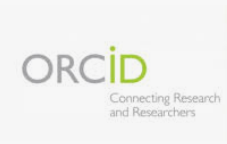Ventilatory management of the patient with serious craniaencephalic trauma.
Keywords:
CRANIOCEREBRAL TRAUMA, INTUBATION, INTRATRACHEAL, RESPIRATION, ARTIFICIAL, ADULTAbstract
The mechanic ventilation is an indispensable therapeutic maneuver in the patient with serious craniaencephalic trauma, because it protects the aerial way through the endotracheal intubations, allows sedation, and healing; that way there are avoided the hypoxemia and/or hypercapnia. They can bring on fatal consequences in the evolution of the patient with an acute cerebral pathology. Among the complications associated to the patient with a serious craniaencephalic trauma, the acute pulmonary lesion and the respiratory distress are highlighted. These patients present a diminishing of their vital capacity and of their functional residual capacity, atelectasis, different alteration levels of the vascular permeability and non-cardiogenic pulmonary edema. All of these situations make recommendable the use of low or moderated levels of positive pressure at the end of the expiration (PPEE), producing an improvement of the oxygenation and in the relation ventilation-perfusion because it recruits previously collapsed alveoli. To adjust the levels of the positive pressure at the end of the expiration and to apply the hyperventilation, it is necessary a multimodal study (intracranial pressure, polyvinyl chloride, cerebral tissue pressure of O 2, venous saturation of O 2 in the gulf of the jugular). That way we can estimate the cerebral blood blow at the patient's bead head and settle the adequate mechanic ventilation. The purpose of this review is to know the adequate management of the aerial tract in patients with serious craniaencephalic trauma to guarantee an appropriated ventilation and oxygenation.Downloads
How to Cite
Issue
Section
License
All content published in this journal is Open Access, distributed under the terms of the CC BY-NC 4.0 License.
It allows:
- Copy and redistribute published material in any medium or format.
- Adapt the content.
This will be done under the following terms:
- Attribute the authors' credits and indicate whether changes were made, in which case it must be in a reasonable way.
- Non-commercial use.
- Recognize the journal where it is published.
The copyrights of each article are maintained, without restrictions.





